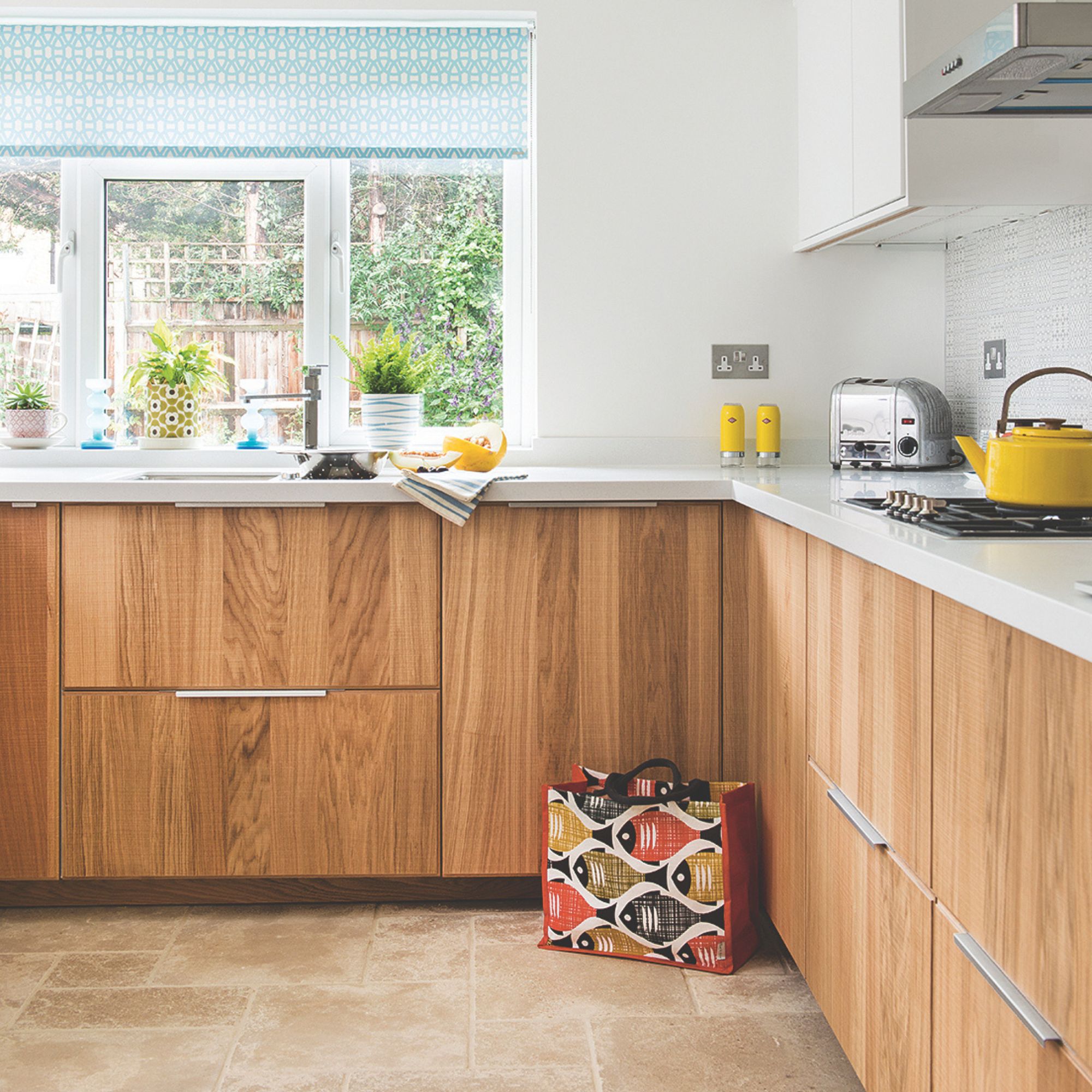Can you put lino over tiles? You can, but experts urge you to proceed with caution if you want a flawless finish
It’s not a simple answer


Ugly bathroom tiles getting you down? Looking to switch up the look of your kitchen? The idea of ripping up these tiles and starting from scratch can be daunting, so you might wonder: Can you put lino over tiles?
Yes, if your flooring ideas need an upgrade but you can only afford to renovate on a budget, covering your tiled floor rather than replacing your tiled floor sounds like a quick and affordable fix. And as lino is famous for its durability, low-maintenance care requirements, and for offering a wide range of colours, patterns, and styles, we can understand why you’d lean towards lino.
But can you put lino over tiles? Luxury interior design expert Tommy Kebbson, says, ‘Linoleum is a cost-effective way for many homeowners to renovate their space in a way that feels less permanent than having to remove and change tiles as it can be installed over most flooring.’ However, there are several things you need to check before you can put lino over tiles.
1. Check the quality and moisture level of your subfloor

If you’re looking to refresh your flooring, you also need to think about your subfloor. Essentially, the subfloor is the base layer of material installed beneath a new floor to support the decorative finish. Generally, this is concrete or plywood, but it all depends on the age of your house.
And while you can technically put lino over tiles, this is completely dependent on your subfloor and could require a bigger job if the quality and moisture level of your subfloor are poor.
Tim Warren, a DIY expert from Adkwik, says, ‘For example, certain kinds of tiles may be laid on bare earth or ash if they were designed to be breathable, and placing lino on top of this can lead to damp issues. If this is the case in your home, you should remove the tiles and dig out the floor so that you can install insulation, damp-proof membranes and concrete.’
Unfortunately, it can be hard to determine the quality of your subfloor without ripping up a tile and seeing for yourself, but you can check the moisture level easily.
Sign up to our newsletter for style inspiration, real homes, project and garden advice and shopping know-how
Paul Hambidge, Managing Director at Factory Direct Flooring, says, ‘A good way to check your floor's moisture level is with a moisture meter, and you're looking for less than 75% humidity.’
2. Understand the age and quality of your tiles

Typically, people choose tiles to bring their bathroom floor tile ideas or kitchen floor tile ideas to life as they’re a hard-wearing option for high-traffic home areas. But while tiles can handle spills and general wear and tear, they’re not invincible - especially the older they get.
Because of this, you need to consider the age and quality of your tiles before covering your tiles with lino. To get a flawless finish, you need to work with a flush, smooth surface, and this may not be possible if the tiles are old and damaged.
Tim says, ‘Before laying lino over tiles, you should ensure that the tiles are level and free of any imperfections that could cause issues or be visible through the lino.’
Cleaning your tiles may be enough to prepare them for lino, but if you have dents or cracks, it’s worth levelling them out with a self-levelling compound instead. This will fill in those imperfections and give you a level surface to work with.
3. Check for grout lines in your tiles

If you’re looking to put lino over tiles, that’s probably because you no longer like the look of your tiles. However, you need to consider the grout lines in these tiles - as they can ruin the look of your new lino in an instant.
Even if the lino doesn’t look like tiles (for example, maybe you’ve chosen a faux wood effect), you’ll still be able to see the indentation of the grout lines beneath the surface, which is probably not what you want. Unless you’ve chosen lino floor tile stickers, of course.
Paul echoes this, explaining, ‘If you're laying vinyl or lino on top of ceramic tiles, then you need to think about the shape and edge of the tile. Otherwise, over time, your lino on top will 'sink' down below the bevel where the grout is and would show through.’
Of course, that doesn’t mean that you can’t lay vinyl over tiles with grout lines. You may just need to skim over with a levelling compound, as previously mentioned, or opt for a thicker lino option.
Paul says, ‘Felt-backed vinyl is a good option for tiles like this because the extra thickness and felt layer makes it less noticeable.’
4. Understand the texture of your tiles

If you’ve ever tried to paint or stick something to a glossy surface, you’ll know just how difficult it can be. Everything slips and slides, and it never really lasts very long. So, if you’re looking to put lino over glossy tiles, you’ll have to consider this before getting started.
Tim says, ‘Lino will need to be able to adhere to the surface it is placed upon, and tiles that are glossy or textured can affect adhesion or require additional products to ensure the floor is stuck down properly.’
Because of this, you may have to start off by adding a levelling compound or play around with different adhesives to find one that works. You might even have to use multiple different products to get it to stick properly.
When doing this, Tommy advises, ‘For linoleum, it’s important to glue it down to the floor, so spread your adhesive onto the floor and slowly stick the linoleum down onto the surface as evenly as possible. I recommend not walking on the surface for at least 24 hours.’
FAQs
Do you need underlay for lino on tiles?
No, you shouldn’t need underlay if you put lino over tiles. You typically only need underlay if you are laying floor for the first time. As you already have a base layer of tiles, you shouldn’t need it.
However, you can choose to install underlay or use a levelling compound on top of the tiles to provide a solid base for your new lino flooring. You should only need to do this if there’s something wrong with the tiles or if you want to ensure the grout lines aren’t on show.
What flooring can you put over tiles?
You can put many types of flooring over tiles, including lino, vinyl, and engineered wood flooring. With all of these options, though, your tiled flooring needs to be in relatively good condition - or easily mended.
That’s because any new flooring needs a stable and solid base, and installing new floor over poor-quality tiles could result in a poor finish.
So, there you have it. You can put lino over tiles - as long as you know what you’re doing, first.

Lauren Bradbury has been the Content Editor for the House Manual section since January 2025 but worked with the team as a freelancer for a year and a half before that. She graduated with a Bachelor’s degree in English and Creative Writing from the University of Chichester in 2016. Then, she dipped her toe into the world of content writing, primarily focusing on home content. After years of agency work, she decided to take the plunge and become a full-time freelancer for online publications, including Real Homes and Ideal Home, before taking on this permanent role. Now, she spends her days searching for the best decluttering and cleaning hacks and creating handy how-to guides for homeowners and renters alike, as well as testing vacuums as part of her role as the Ideal Home Certified Expert in Training on Vacuums, having spent over 110 hours testing different vacuum models to date!



